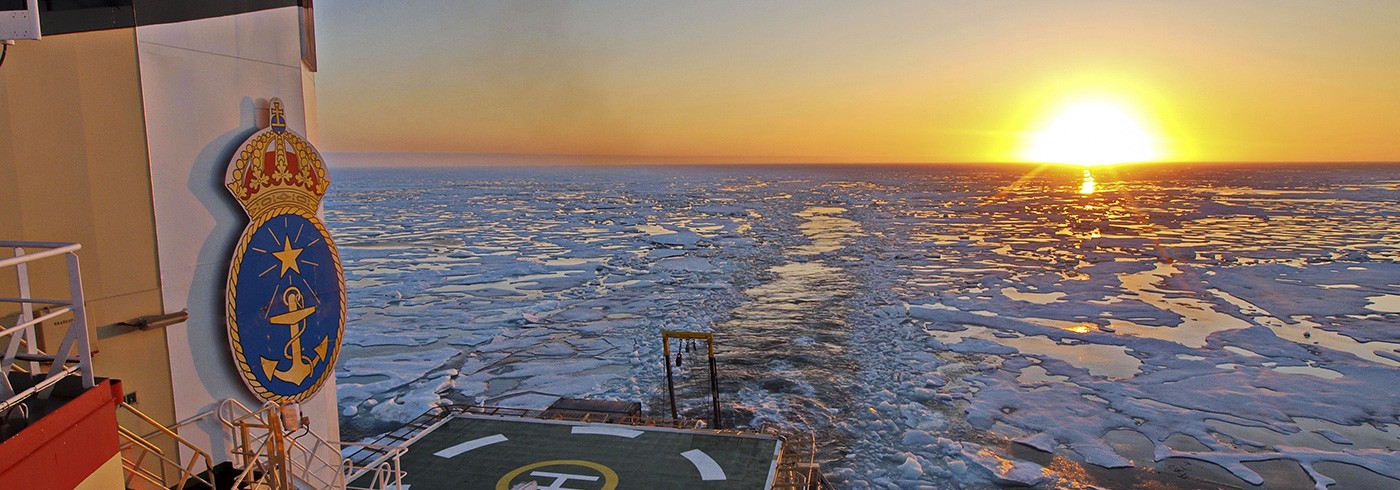Now we are in the middle of the Laptev Sea. We reached our first station yesterday evening. Just over 3000 meter deep. In ice! Multicorer – CTD – Multicorer was on the program. Oden parked in ice and needed to stand-by for a while before she was still in a channel between two ice floes. Ice was coming in to the aft with the wind, so pieces of ice drifted into the notch preventing us to get the sampler, Multicorer down.
It was decided to switch so that the CTD should go first as the ice drifted away from the bow. 3000 meters is just over one hour down and one hour up. The rosette full with twentyfour 10-litre water sample bottles to sample water at different depths on the way up. Conductivity, temperature and depth to be measured on the way down. Different layers of water at different depth with shifting salinity and temperature. The winch has a cable inside the wire taking the data up to the ship and the CTD lab. The closing of the bottles are controlled from the lab. The instrument also has a ADCP, current meter, and a pinger that tells the distance to the bottom. Two hours, and up on deck. Take the CTD on board with the A-frame and roll it into the CTD lab so it don’t freeze and then the line of waiting scientists with bottles in their hands waiting on their turn to sample. Strict order. One general over the sampling plan. The most fluent gases to be sampled first. It takes time, and then rush to the labs for starting up preparing the samples and start the analyses.
Meanwhile the aft deck is full of activity. As the CTD reached the waterline the Multicorer was prepared, loaded with new tubes, and ready to be launched. The A-frame moves slowly afterwards with the Multicorer hanging in the Dynema rope winch. The deck crew leads the instrument out from the rigging platform over the tail deck and into the sea. Clearance from the bridge and the Multicored dives and is gone. After 90 minutes it hit the sea floor slack the rope for 30 seconds to let the corer sink slowly into the upper sediments. The winch pulls slowly and lifts the corer out of the sediments. And then, 90 minutes up to the surface.
It is a reversed action for the sampler in towards the stern notch. Put the guide ropes on. Give the to the crew on the platform. A-frame goes in. The winch follows, lands the corer on the platform. Secure it. Now resting peacefully the sciencetists removes the sampling tubes and starts to extract the sediments and water from the sediments.
Then one more run with the Multicorer. Then two hours steaming. Then repeat the sampling. Then steaming again. Sampling. Steaming. Sampling.
All the way to Barrow, Alaska.

